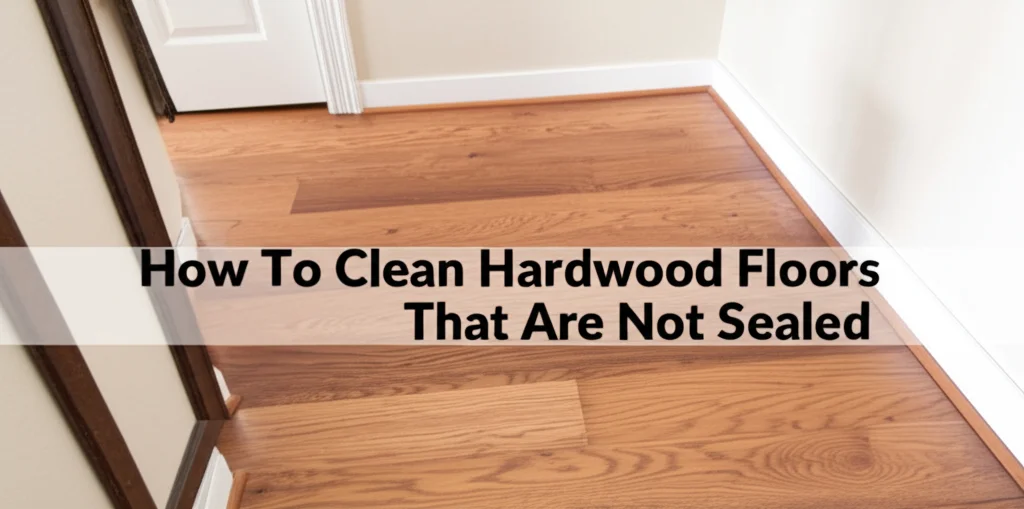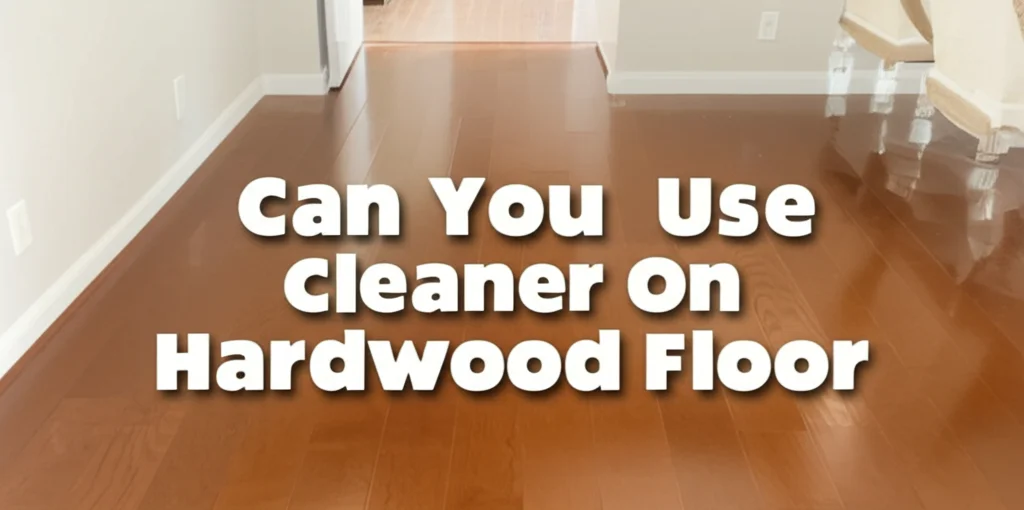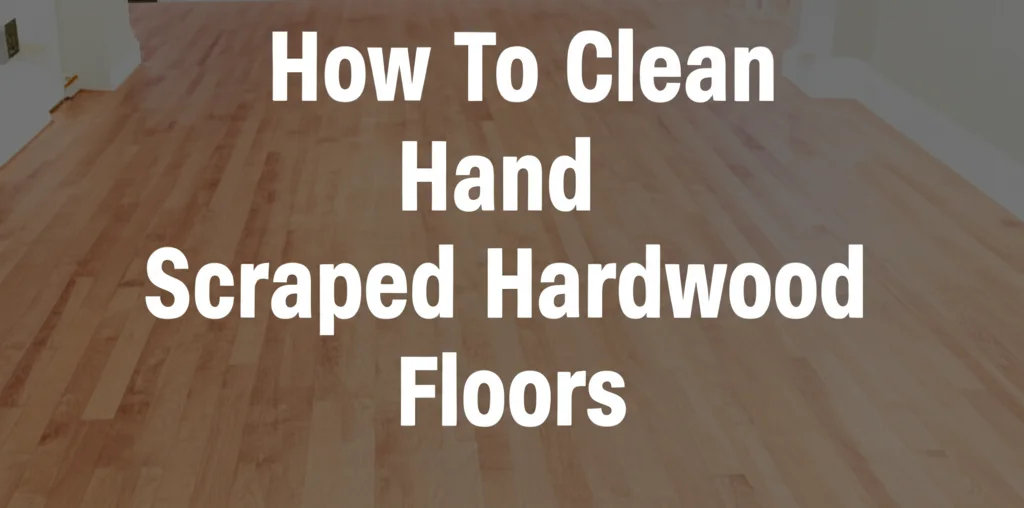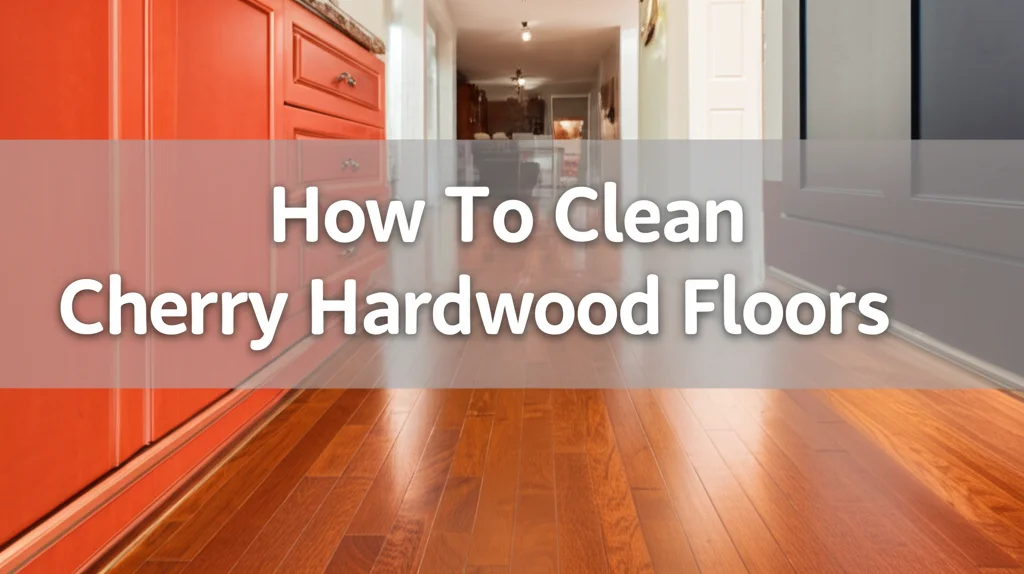· Flooring · 9 min read
Best Way To Clean Unsealed Hardwood Floors
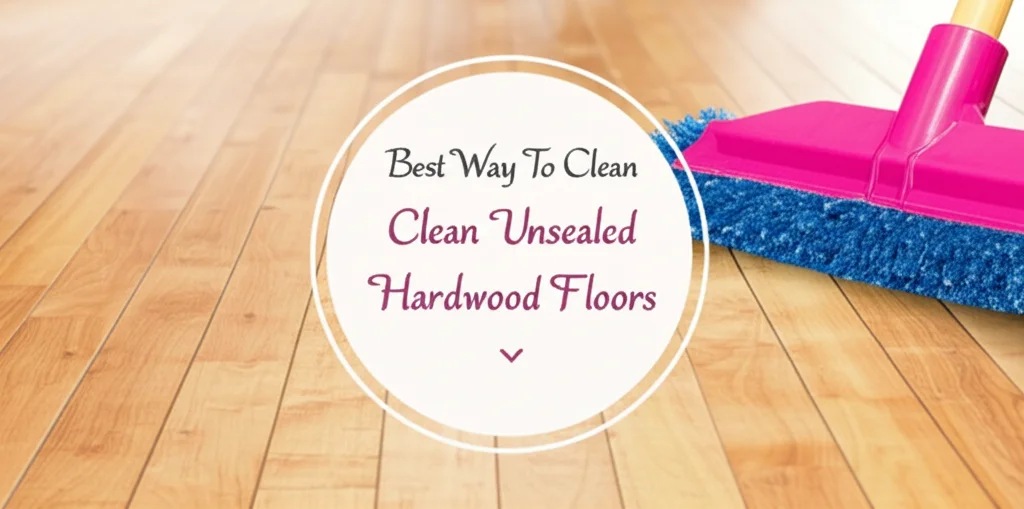
Unsealed hardwood floors bring timeless beauty to homes but require special cleaning methods to preserve their natural character and prevent damage.
Unlike their sealed counterparts, these bare wood surfaces are vulnerable to moisture, which can cause warping, staining, and deterioration.
This comprehensive guide explores the best techniques, products, and maintenance routines to keep your unsealed hardwood floors clean and beautiful for years to come.
Takeaways:
- Use minimal moisture when cleaning unsealed hardwood floors
- Opt for gentle cleaning solutions like diluted dish soap or specialized wood cleaners
- Never use vinegar, steam, or water-saturated mops on unsealed wood
- Regular dusting and prompt spill cleanup are essential for maintenance
- Consider sealing your floors for easier long-term care
Understanding Unsealed Hardwood Floors
Unsealed hardwood floors lack the protective coating found on modern finished floors. Often found in historic homes built before 1940, these floors have a distinctive matte appearance and porous surface that absorbs liquids readily.
Before attempting any cleaning, it’s crucial to confirm whether your floors are truly unsealed or simply have an older finish that appears less glossy than contemporary options.
How to Identify Unsealed Hardwood Floors
Unsealed hardwood floors have several distinguishing characteristics:
- They absorb water droplets quickly rather than beading them up
- They have a matte, non-reflective appearance
- The wood feels rough or textured to the touch
- They stain easily when exposed to colored liquids
- They often have darker areas where oils have penetrated over time
Many homeowners mistake low-gloss finishes for unsealed wood. To test your floor, place a small drop of water in an inconspicuous area. If it soaks in and darkens the wood within minutes, your floor is likely unsealed. If it beads up or sits on the surface, your floor has some form of finish, even if it’s worn.
Unsealed floors were common in homes built before modern polyurethane finishes became standard. Today, they’re relatively rare but still found in historic properties or homes where owners prefer the natural look and feel of untreated wood.
Essential Cleaning Supplies for Unsealed Hardwood
When gathering cleaning supplies for unsealed wood floors, prioritize gentle tools and mild solutions that won’t saturate or damage the raw wood surface.
Best Cleaning Tools for Unsealed Wood Floors
- Soft-bristled broom or dust mop - For daily dust and debris removal
- Microfiber mop - For damp-cleaning with minimal moisture
- Soft cotton cloths - For spot cleaning and drying
- Vacuum with bare floor setting - Ensure it has no rotating brush that could scratch
- Spray bottle - For controlled application of cleaning solution
Recommended Cleaning Solutions
- Diluted mild dish soap (few drops in a gallon of water)
- Specialized unsealed wood cleaners (check manufacturer recommendations)
- Plain water (used very sparingly)
What you should avoid is equally important. Never use these products on unsealed wood:
- Vinegar (too acidic for bare wood)
- Ammonia-based cleaners
- Oil soaps
- Steam mops
- All-purpose cleaners
- Wax-based products (unless specifically for bare wood floors)
Using the wrong products can cause permanent damage to unsealed hardwood floors, including discoloration, warping, and grain raising.
Step-by-Step Cleaning Process
Cleaning unsealed hardwood floors requires a gentle touch and careful moisture management. Follow this methodical approach for best results.
Daily Maintenance
- Dust daily with a soft broom or microfiber dust mop to prevent scratch-causing particles from accumulating.
- Wipe up spills immediately using a soft, dry cloth. Even water can stain unsealed wood if left to soak in.
- Place mats at entryways to collect dirt and moisture before they reach your floors.
- Use furniture pads under all table and chair legs to prevent scratches.
Weekly Deep Cleaning
For a more thorough cleaning:
- Vacuum thoroughly using a floor attachment without a beater bar.
- Prepare a cleaning solution by adding a few drops of mild dish soap to a gallon of warm water.
- Dampen (not wet) a microfiber mop by dipping and thoroughly wringing out excess moisture.
- Clean in small sections (approximately 3×3 feet) at a time.
- Follow immediately with a dry cloth to remove any moisture from the floor surface.
- Allow floors to dry completely before resuming normal use.
Remember that “damp” means the mop should leave virtually no visible moisture on the floor. If you can see water, your mop is too wet.
Dealing with Stains and Problem Areas
Stains on unsealed hardwood present unique challenges since traditional cleaning methods may drive the stain deeper into the wood. Here’s how to address common issues:
Water Stains
For white water marks:
- Gently rub the area with a cloth and a small amount of mineral spirits
- Allow to dry completely
- If needed, lightly sand with ultra-fine sandpaper (220-grit or finer)
Grease and Oil Stains
- Sprinkle cornstarch or talcum powder over the stain
- Let it sit for several hours to absorb the oil
- Sweep away and repeat if necessary
- For stubborn stains, apply a paste of mineral spirits and cornstarch
Scuff Marks
- Rub gently with a tennis ball or pencil eraser
- For persistent marks, lightly sand with fine-grit sandpaper
- Always sand in the direction of the wood grain
Deep Cleaning Old, Neglected Floors
For floors that haven’t been cleaned in years:
- Start with thorough dusting and vacuuming
- Use a commercial wood floor cleaner specifically formulated for unfinished wood
- Apply with a barely damp mop in small sections
- Dry each section completely before moving to the next
- Consider professional cleaning for severely neglected floors
Cleaning floors from historic homes (like those from 1910) requires patience and gentle methods. Learn more about restoring vintage hardwood floors.
Best Mops and Tools for Unsealed Hardwood Floors
Selecting the right cleaning tools can make a significant difference in both cleaning effectiveness and floor protection.
Recommended Mops
The best mops for unsealed hardwood floors share certain characteristics:
- Microfiber heads that can be wrung out thoroughly
- Adjustable moisture control features
- Washable, reusable cleaning pads
- Lightweight design to avoid scratching
Specific models that work well include:
- O-Cedar ProMist MAX Microfiber Spray Mop
- Bona Hardwood Floor Premium Spray Mop
- Swiffer WetJet Wood Mop (use very sparingly)
Vacuums for Unsealed Wood
When choosing a vacuum for unsealed wood floors:
- Select models with a “bare floor” setting
- Ensure no rotating brush that could scratch
- Consider canister vacuums with soft-bristle attachments
- Look for rubber wheels rather than plastic
Regular vacuuming prevents fine grit and dust from scratching your unsealed floors. Just be sure the vacuum head doesn’t drag or scratch the unprotected surface.
The Vinegar Debate: Can You Use It?
One of the most common questions about cleaning unsealed hardwood floors involves vinegar. Despite its popularity as a natural cleaner, vinegar is generally not recommended for unsealed wood floors.
Why Vinegar Can Damage Unsealed Wood
Vinegar is acidic (with a pH of around 2.5) and can:
- Etch and dull the wood surface over time
- Discolor certain wood species
- Break down natural oils in the wood
- Leave the wood more vulnerable to damage
If you’re committed to using natural products, consider these alternatives:
- Plain water (used very sparingly)
- Mild dish soap solution (a few drops in water)
- Commercial cleaners specifically formulated for bare wood
For those seeking eco-friendly options, learning how to clean hardwood floors with gentler natural methods can provide safer alternatives than vinegar.
Long-Term Care and Protection
Maintaining unsealed hardwood floors extends beyond regular cleaning. Consider these practices for long-term care:
Preventative Measures
- Use area rugs in high-traffic zones (with non-slip, non-rubber backings)
- Install felt pads under furniture legs
- Place boot trays near entrances
- Maintain stable indoor humidity (30-50%)
- Keep pet nails trimmed
- Remove shoes when walking on the floors
Professional Maintenance
Consider these professional services:
- Screen and recoat (for floors with minimal finish remaining)
- Professional deep cleaning
- Custom cleaning formulations for historic floors
The Sealing Question
Many homeowners eventually face the decision of whether to seal their unsealed floors. While sealing changes the natural look and feel, it offers significant benefits:
- Easier cleaning and maintenance
- Protection against water damage and stains
- Increased durability
- Less frequent deep cleaning required
If you choose to maintain the unsealed look, expect to perform more frequent cleaning and be vigilant about spills and moisture.
For information on cleaning sealed hardwood floors, check out this comprehensive guide.
Specialized Scenarios
Different situations may require specific cleaning approaches for unsealed wood floors.
Cleaning After Construction
Construction dust presents a unique challenge:
- Use a shop vacuum with a HEPA filter to remove fine dust
- Wipe with a tack cloth to pick up remaining particles
- Clean with a barely damp microfiber cloth
- Consider professional cleaning for extensive dust
For more information on removing construction debris from hardwood floors, visit this helpful guide.
Pet Accidents on Unsealed Wood
Pet urine can permanently damage unsealed wood:
- Blot (don’t rub) immediately with absorbent cloths
- Apply a pet enzyme cleaner made for wood
- Rinse area with a barely damp cloth
- Dry thoroughly
- For set-in stains, sanding may be necessary
Cleaning Unsealed Wood Furniture
The principles for cleaning unsealed wood floors apply to furniture as well:
- Dust regularly with a soft cloth
- Clean with minimal moisture
- Apply wax or oil specifically designed for bare wood
- Address stains promptly
Learn more about unsealed wood furniture care.
FAQ: Common Questions About Unsealed Hardwood Floors
How do you clean unsealed wood floors?
Clean unsealed wood floors by dusting daily, vacuuming weekly with a bare floor attachment, and occasionally using a barely damp (not wet) microfiber mop with a very mild soap solution. Always dry the floor immediately after damp cleaning and never allow water to sit on the surface.
How do you clean hardwood floors that haven’t been cleaned in years?
For neglected hardwood floors, start with thorough vacuuming to remove built-up dust and debris. Then clean in small sections using a specialized wood cleaner for unfinished floors applied with a barely damp microfiber mop, drying each section immediately.
What cleaner can I use on unsealed wood?
The safest cleaners for unsealed wood include diluted mild dish soap (a few drops in a gallon of water), commercial cleaners specifically formulated for bare/unfinished wood, or plain water used very sparingly. Avoid vinegar, ammonia, or all-purpose cleaners.
What is the best mop for unsealed wood floors?
The best mop for unsealed wood floors is a microfiber mop that can be wrung out thoroughly to leave minimal moisture. Look for mops with adjustable moisture control and washable pads, such as spray mops that let you control the amount of cleaning solution applied.
Can you use vinegar on unsealed wood?
Vinegar is not recommended for unsealed wood floors as its acidity can damage and discolor the raw wood surface. Instead, use mild dish soap solutions or specialized cleaners formulated for unfinished wood that won’t harm the natural wood fibers.
Final Thoughts: Preserving Your Unsealed Hardwood Legacy
Unsealed hardwood floors represent a connection to traditional craftsmanship and historic home design. With proper care, these natural surfaces can continue to add character and warmth to your home for generations. The key to success lies in gentle, minimal-moisture cleaning techniques and preventative maintenance.
Remember that different wood species may react differently to cleaning products, so always test any new cleaning method in an inconspicuous area first. Consider consulting with a professional floor restoration specialist if you have valuable historic floors that require expert attention.
Whether you’re preserving the authentic character of a century-old home or maintaining the natural beauty of more recent unfinished flooring, these cleaning methods will help you enjoy the unique beauty and tactile experience that only unsealed hardwood floors can provide.
For more information on caring for various floor types, check out our guides on cleaning luxury vinyl plank flooring and removing mold from under hardwood floors.
- unsealed hardwood floors
- hardwood floor cleaning
- wood floor care

